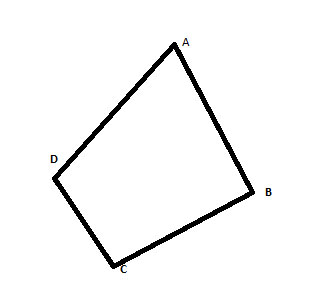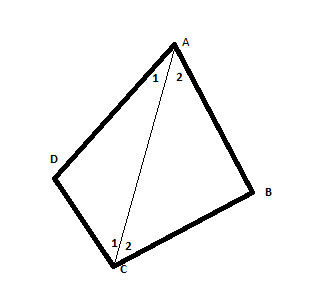In today's lesson, we will prove that the sum of interior angles in a simple convex quadrangle is always 360° by showing that this quadrangle is composed of two triangles.
Problem
Show that the sum of interior angles in a simple convex quadrangle is always 360°.

Strategy
Let’s think about the strategy to answer this geometry problem. 360 is a familiar number - it is the measure of angles in a circle, but there are no circles here, so let’s rule that out.
360 is also 2x180, and that is also a familiar number. It is the sum of the angles in a triangle.
So, if we can show that this quadrangle is composed of two triangles, we will have the proof- and that’s all we need.
Proof
In any simple convex polygon, a line connecting 2 points on the perimeter of the polygon is entirely within the polygon, per the definition of convex polygons.
So, let’s draw a line connecting two opposite corners of the quadrangle (such a line is a called a ‘diagonal’) – say from C to A:

(1) m∠A1 + m∠D+ m∠C1 = 180° //sum of the interior angles in triangle ΔADC
(2) m∠A2 + m∠B+ m∠C2 = 180° //sum of the interior angles in triangle ΔABC
(3) m∠A1 + m∠D+ m∠C1+m∠A2 + m∠B+ m∠C2 = 360° //add both equations
(4) m∠A1 + m∠A2 +m∠D+ m∠C1+ m∠C2 + m∠B= 360° //re-arrange terms
(5) m∠A1 + m∠A2 = m∠A // angle addition postulate
(6) m∠C1 + m∠C2 = m∠C // angle addition postulate
(7) m∠A+m∠D+ m∠C + m∠B= 360° ∎ //substitution property of equality
